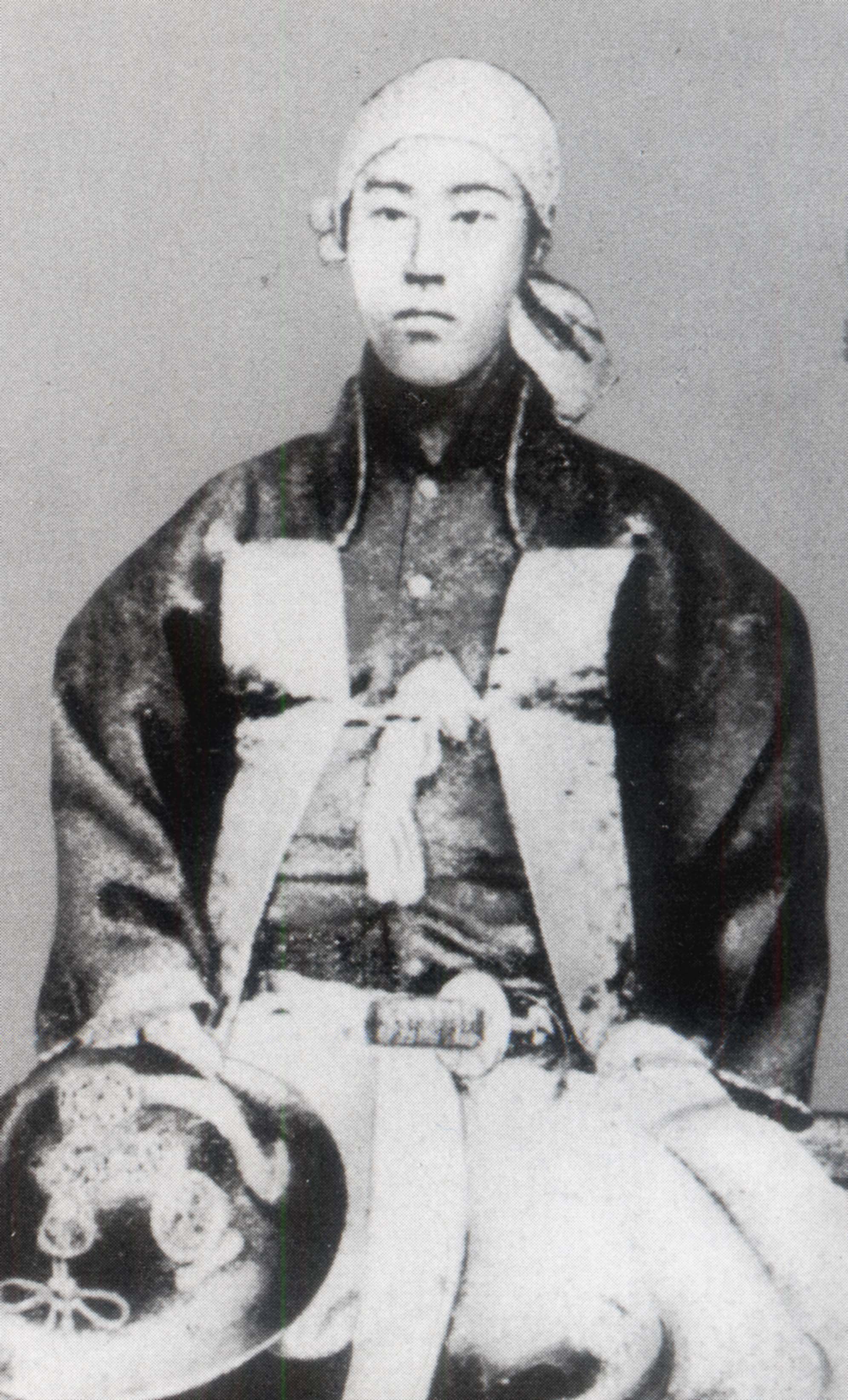- Hayashi Tadataka
Infobox_Officeholder | name= Hayashi Tadataka
nationality=Japanese
small
caption=Hayashi Tadataka in 1868
order=4th Lord of Jōzai
term_start=1867
term_end=1868
predecessor=Hayashi Tadakata
successor=none
birth_date=birth date|1848|8|26|mf=y
birth_place=Edo ,Japan
death_date=death date and age|1941|1|22|1848|8|26|mf=y
death_place=Tokyo ,Japan
spouse= Kojima Chisenihongo|Hayashi Tadataka|林忠崇| (August 26 ,1848 -January 22 ,1941 ) was a Japanesedaimyo of the lateEdo period , who ruled theJōzai Domain . Later in life, he was also known by his style, nihongo|Ichimu|一夢|. During theBoshin War of 1868, Hayashi led his domain's forces in support of the armies of the former shogun, and then theNorthern Alliance . Unlike the Tokugawa forces which went on toEzo , Hayashi surrendered willingly when he received word that the Tokugawa family was to be granted a fief in Shizuoka. During theMeiji era he worked in various occupations (even as a clerk for a business inHakodate ), before working for the government. In the Meiji era, his family was ennobled as part of the "kazoku " system. For a time he also served atToshogu Shrine inNikko . Hayashi lived well into the 20th century, and was famous as "the last daimyo." He died in early 1941, in an apartment run by his daughter Mitsu.When asked for a
death poem , he is reported to have said, "In the Boshin [War] I had one. I don't have one now."Hayashi appears as a character in
Ikenami Shōtarō 's novel "Bakumatsu Yūgekitai".References
*
Yamakawa Kenjirō (1933). "Aizu Boshin senshi". Tokyo: Tokyo Daigaku Shuppankai.
*Nakamura Akihiko (2000). "Dappan daimyo no Boshinsensō: Kazusa Jōzai hanshu Hayashi Tadataka no shōgai". Tokyo: Chūōkōron-shinsha.
Wikimedia Foundation. 2010.
